Area of a Triangle Sine Formula
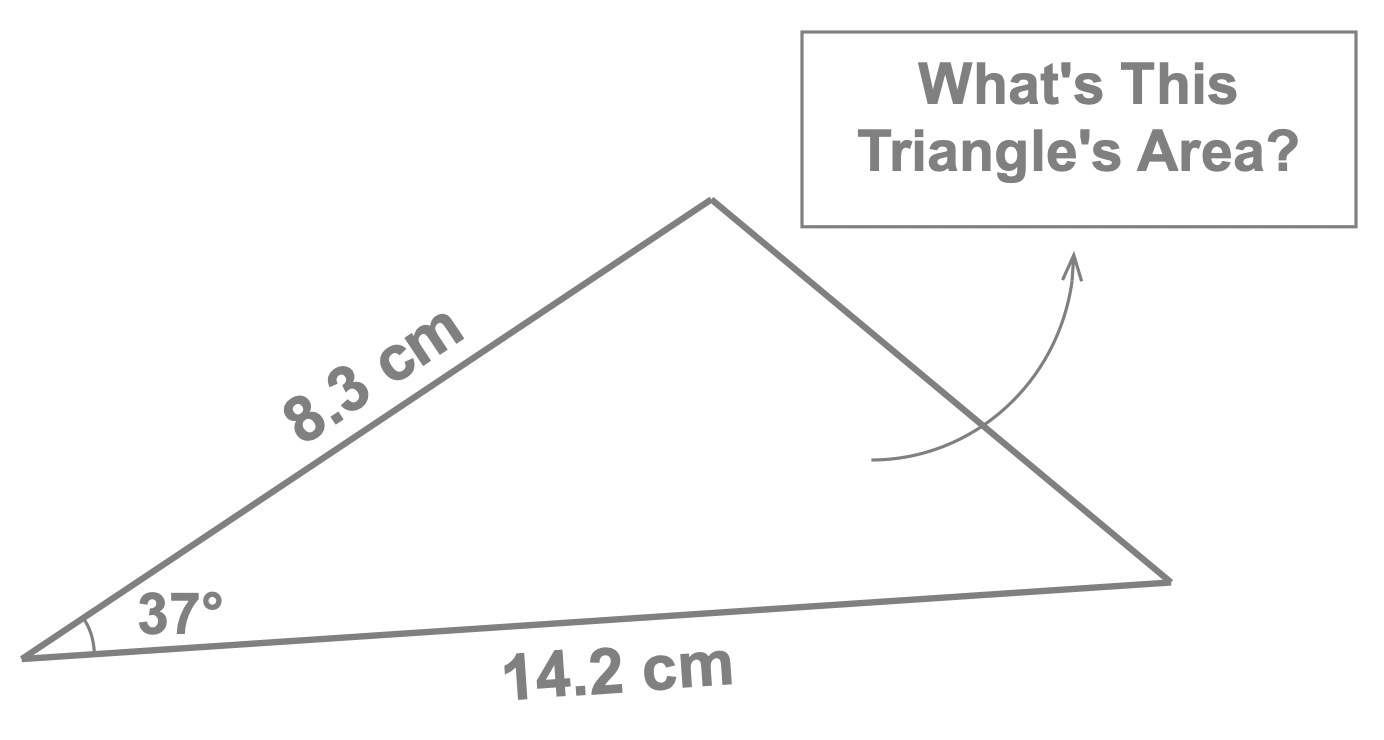 Here we learn how to calculate the area of a triangle using sine. As we're about to learn: all we need to calculate the area of any triangle is:
Here we learn how to calculate the area of a triangle using sine. As we're about to learn: all we need to calculate the area of any triangle is:
- two of its side lengths
- the angle in between them
What we'll Find Here
- Video tutorial: formula and worked example for calculating the area of a triangle with the sine formula
- Sine Formula for the area of a triangle
- explanation of the formula
- Worked Examples 1 & 2
Area of a Triangle - Sine Formula
In the following tutorial we learn the Area of a Triangle with Sine Formula and work through an Example to see how to use it.
Formula : Area of a Triangle
Given a triangle, we can calculate its area provided we know 2 of its side lengths as well as the angle in between them.
We can do so with the following formula:

Explanation
We already know that the area of a triangle is given by: \[\text{Area} = \frac{1}{2}\times \text{Base} \times \text{Height}\] Now consider the generic triangle in which side lengths \(a\) and \(b\) are known as well as the angle \(C\) between them. Its height, \(h\), is shown here:
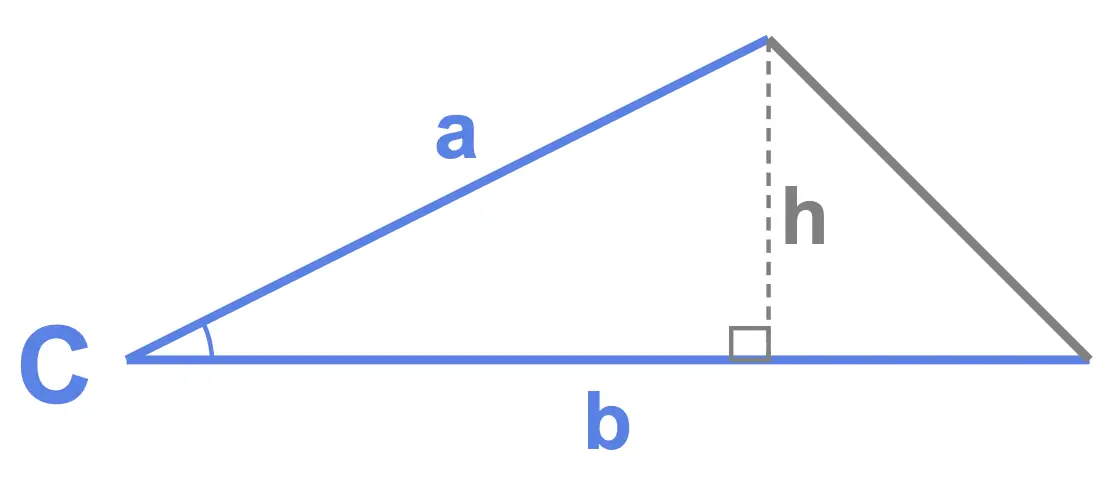

Replacing \(h\) by \(a\times sinC\) in our formula \(\text{Area} = \frac{1}{2}\times b \times h\) we obtain: \[\text{Area} = \frac{1}{2} \times b \times a \times sinC\] Which we can write as our formula: \[\text{Area} = \frac{1}{2} . a . b . sinC\]
Example 1
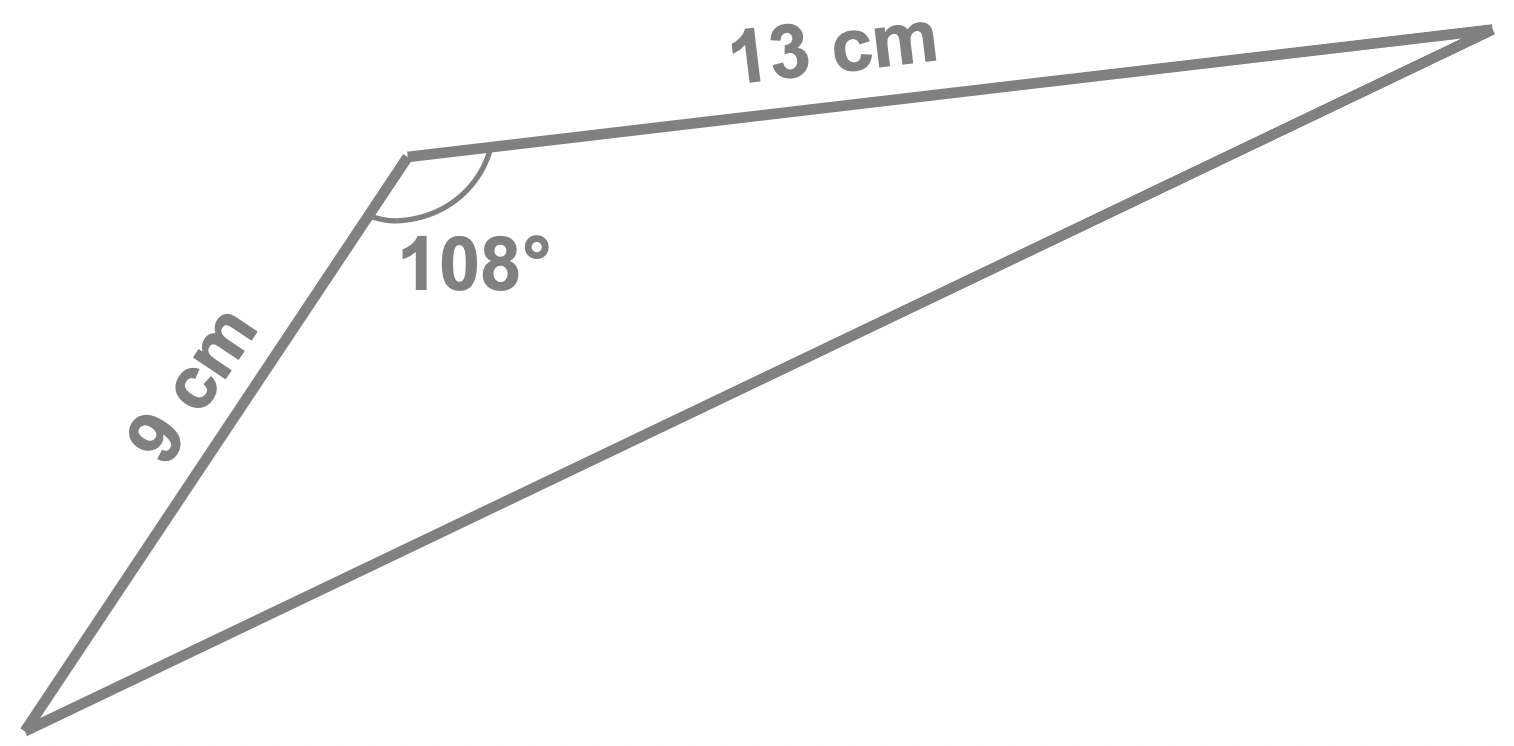 Rounding your answer to 3 significant figures, calculate the area of the triangle shown here.
Rounding your answer to 3 significant figures, calculate the area of the triangle shown here.
Solution
Looking at the information we have, we have two side lengths and the angle between them. Indeed we have:
- two sides of lengths 9 cm and 13cm
- the angle between them \(108^{\circ}\).
 We can therefore use our formula:
\[\begin{aligned}
\text{Area} & = \frac{1}{2} \times 9 \times 13 \times sin\begin{pmatrix}108 \end{pmatrix} \\
& = 55.636806 \\
\text{Area} &= 55.6\ \text{cm}^2 \quad \text{(rounded to 3 significant figures)}
\end{aligned}\]
We can therefore use our formula:
\[\begin{aligned}
\text{Area} & = \frac{1}{2} \times 9 \times 13 \times sin\begin{pmatrix}108 \end{pmatrix} \\
& = 55.636806 \\
\text{Area} &= 55.6\ \text{cm}^2 \quad \text{(rounded to 3 significant figures)}
\end{aligned}\]
Example 2
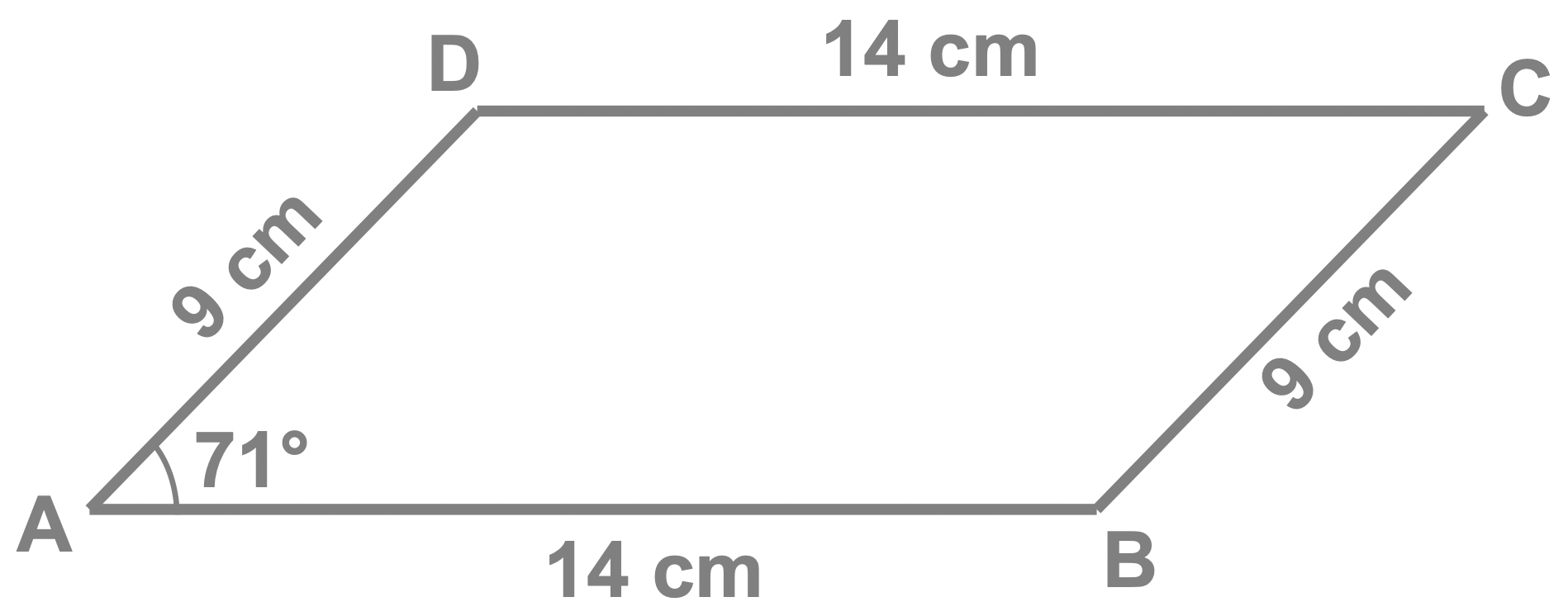 Rounding your answer to 3 significant figures, calculate the area of the parallelogram ABCD.
Rounding your answer to 3 significant figures, calculate the area of the parallelogram ABCD.
Solution
The trick for calculating this parallelogram's area is to see that it can be thought of as two idetical triangles stuck together, one of which is illustrated here:
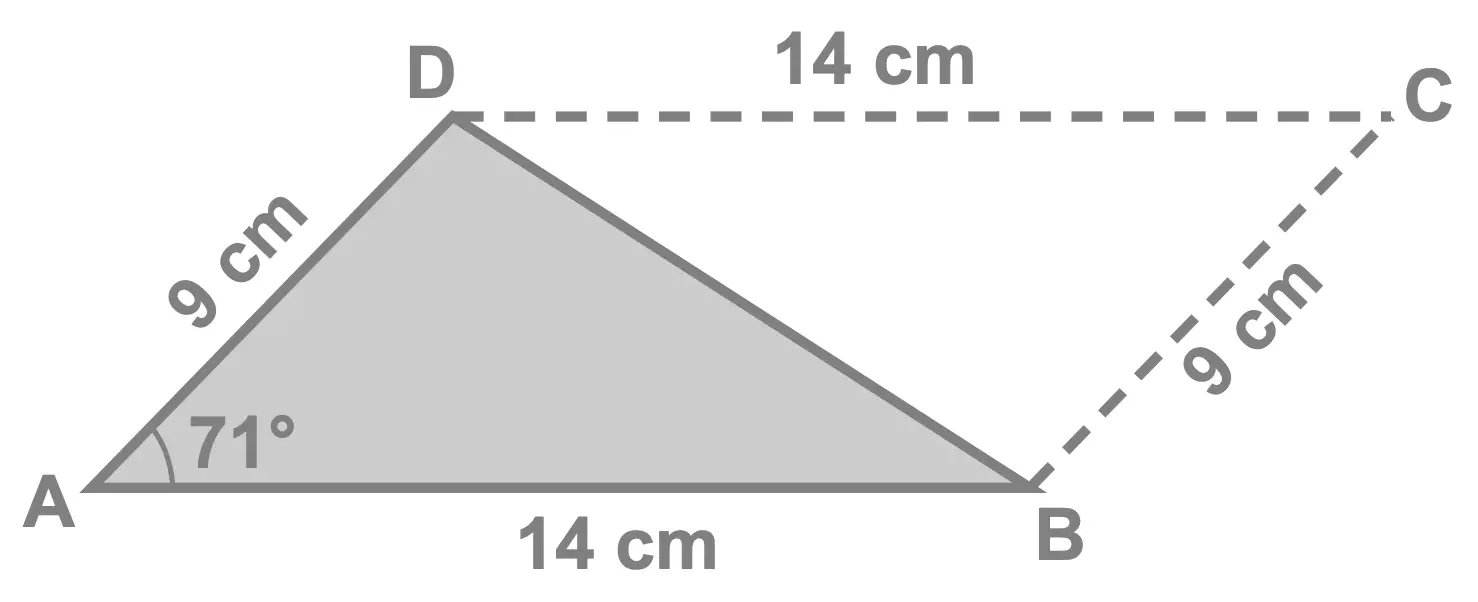
Consequently, to calculate the parallelogram's area we can calculate the area of the triangle \(ABD\) and multiply the result by 2.
So, using the formula for the area of a triangle with:
- triangle's side lengths : 9 cm and 14 cm
- angle between the sides : \(71^{\circ}\)
Finally to calculate the parallelogram's area we multiply that result by \(2\):
\[\begin{aligned}
\text{Area of Parallelogram} & = 2\times \begin{pmatrix} \text{Area of Triangle} \end{pmatrix} \\
& = 2\times \begin{pmatrix} \frac{1}{2} \times 9 \times 14 \times sin \begin{pmatrix}71 \end{pmatrix} \end{pmatrix}\\
& = 2\times 59.56767 \\
\text{Area of Parallelogram} & = 119.13534
\end{aligned}\]
Finally, rounding the answer to 3 significant figures we obtain the answer:
\[\text{Area of Parallelogram} = 119 \ \text{cm}^2 \quad \text{(3 significant figures)}\]
Scan this QR-Code with your phone/tablet and view this page on your preferred device.
Subscribe Now and view all of our playlists & tutorials.